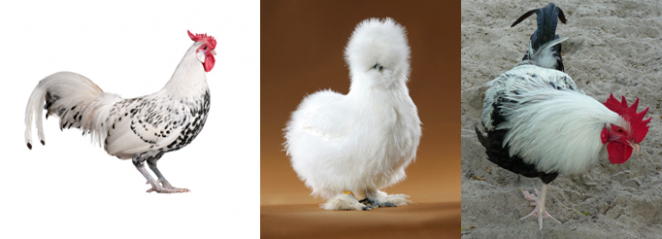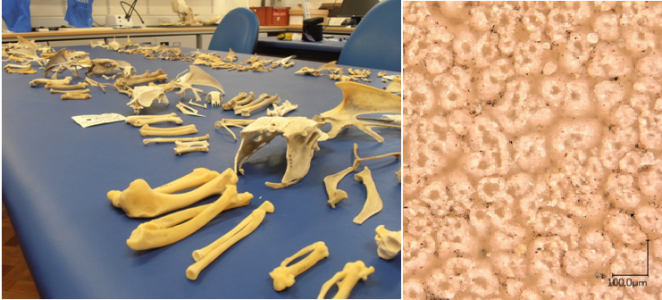Collecting Chickens: The formation of a reference collection
At the University of Leicester, research into the development of chicken breeds has resulted in one of the largest and best-provenanced collections of domestic fowl skeletons in Britain.
Among the key issues we are investigating as part of the chicken project are: when did people start breeding chickens to purposefully alter their shape, size and appearance, how did they achieve this, and what were the underlying motivations. To begin exploring these questions we first need to develop methods to establish if different ‘types’ of chickens can be detected from their bones in the archaeological record. Our first step towards this goal is building a reference collection of known-breed chickens so, in January 2014, the Leicester team put out an appeal to poultry-keepers and breeders of exhibition fowl for casualties and surplus stock. The response was extremely positive and, since the appeal was launched, over fifty specimens have made their way to Leicester from places as far distant as Aberdeen, the Isle of Man and the Welsh borders.
Many of the skeletons in the collection are from traditional breeds believed to have been established in Britain before the 1850s. These are the most relevant for biometrical analysis and comparison with archaeological remains. They include five-toed Dorkings which may have been introduced by the Romans, Spangled Hamburghs from the north of England and Old English Game Fowl, descendants of birds bred for cock-fighting. Others are relatively recent introductions and may owe their presence to the so-called ‘Hen Fever’ of the mid-19th century which saw many more breeds imported from all around the world. Among these are the giant Buff Orpington, bred from large, soft-feathered chickens from China, fluffy Silkies, also from China, and tiny Japanese bantams.

Detailed observations are kept for each specimen. Before preparation, each chicken is weighed and photographed. As well as the breed, the age, sex and cause of death are recorded, including any known health problems. If the birds are female, notes are made on whether they are in lay or, if not, the approximate date of the last egg laid. Finally, a feather sample is taken.
Apart from its primary purpose, the collection has the potential to inform on other research questions. For example, several of the female birds have spurs. This appears to be a relatively common phenomenon although it may have been rarer in the past as Roman and medieval poultry-keepers were advised to cull hens with masculine traits. Shape analysis of these modern examples may make spurred hens from archaeological assemblages easier to identify. Some of the hens in the reference collection contained partially developed eggs. These are being examined by Julia Best of Bournemouth University using microscopy. Studying the shell structure from eggs of many different types and ages is helping to develop our understanding of egg use and animal husbandry in the past by providing a comparative collection for the archaeological material.
A selection of the feathers has been submitted for DNA analysis by Ophélie Lebrasseur and Greger Larson from the University of Oxford. Data from these samples will shed light on genetic variability within breeds as well as breed development. Feathers and bones from some of the chickens will also feature in forthcoming art projects. An assortment of feathers, along with fact sheets about the breeds from which they were taken, has been sent to team member and artist Ben Frimet. These will be used in a workshop and follow-up lessons for Year 7 children at the City of London Academy, Southwark. Finally, Leicester archaeology department's Arts Council funded artist-in-residence, Jo Dacombe, will be using the skeletons along with other reference specimens from the Bone Lab as part of a big project that will last all year.

Follow us
Keep up to date with the latest project news via our Twitter feed.
- — 5 years 9 months ago
- — 6 years 6 months ago
- — 6 years 7 months ago
- — 6 years 7 months ago

 ChickenCoop
ChickenCoop